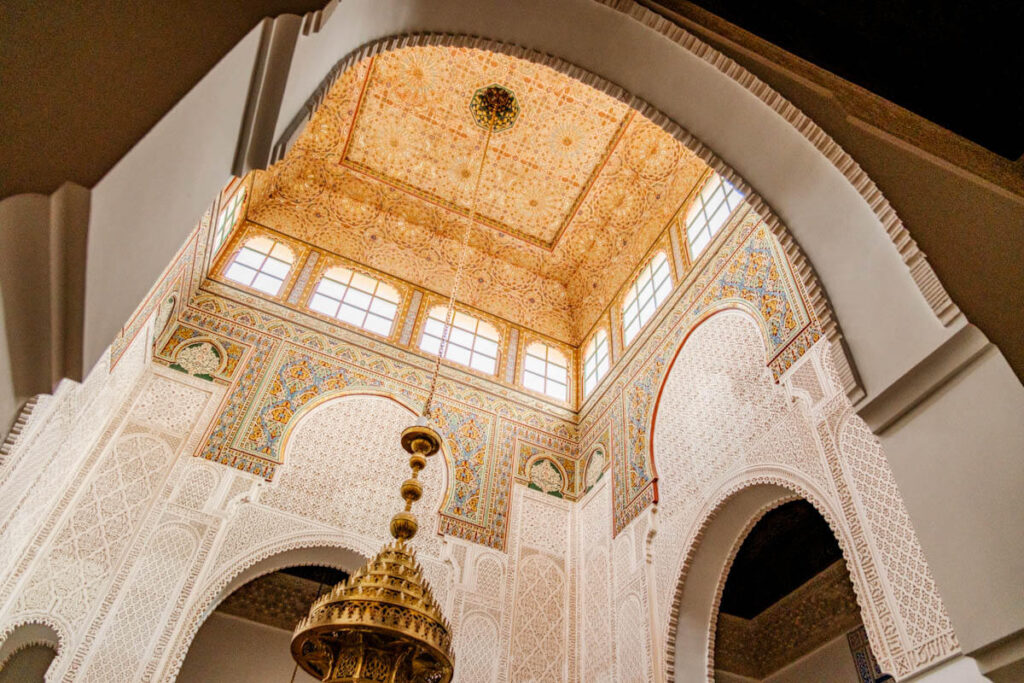Morocco is home to four imperial cities and Meknès is one of them. While it receives fewer visitors than Marrakech or Fez, Meknès has plenty of stunning sights to offer. Palaces, mosques, spacious squares and grand city gates… the city is a feast for the eyes. One of its most impressive landmarks is the Mausoleum of Moulay Ismail.
Who was Moulay Ismail?
Moulay Ismail ibn Sharif was one of Morocco’s most influential rulers. He reigned from 1672 until his death in 1727 and was known for his strict regime. His rule brought a relatively stable era to Moroccan history. After establishing a professional army, he focused on protecting and expanding the kingdom’s borders — a mission in which he largely succeeded. He developed a strong national infrastructure and built some of the most impressive palaces in the country, particularly in Meknès, which he made his capital. Moulay Ismail laid the foundation for the Alaouite dynasty, to which the current king also belongs.
Mausoleum of Moulay Ismail
Construction of the mausoleum dedicated to Moulay Ismail was completed in 1703, some 24 years before his death. After he passed, he was buried there, followed by one of his wives and two of his sons. Today, the mausoleum serves not only as the final resting place of the sultan but also as an important pilgrimage site for Muslims. It’s one of the few such places in Morocco that people of other faiths are also allowed to visit.

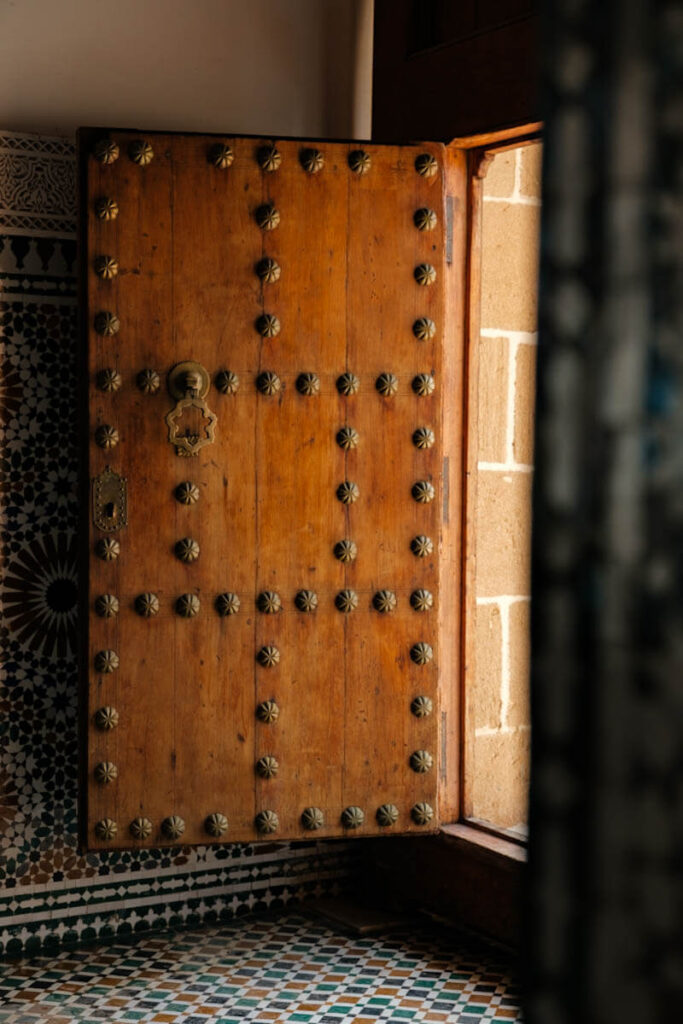
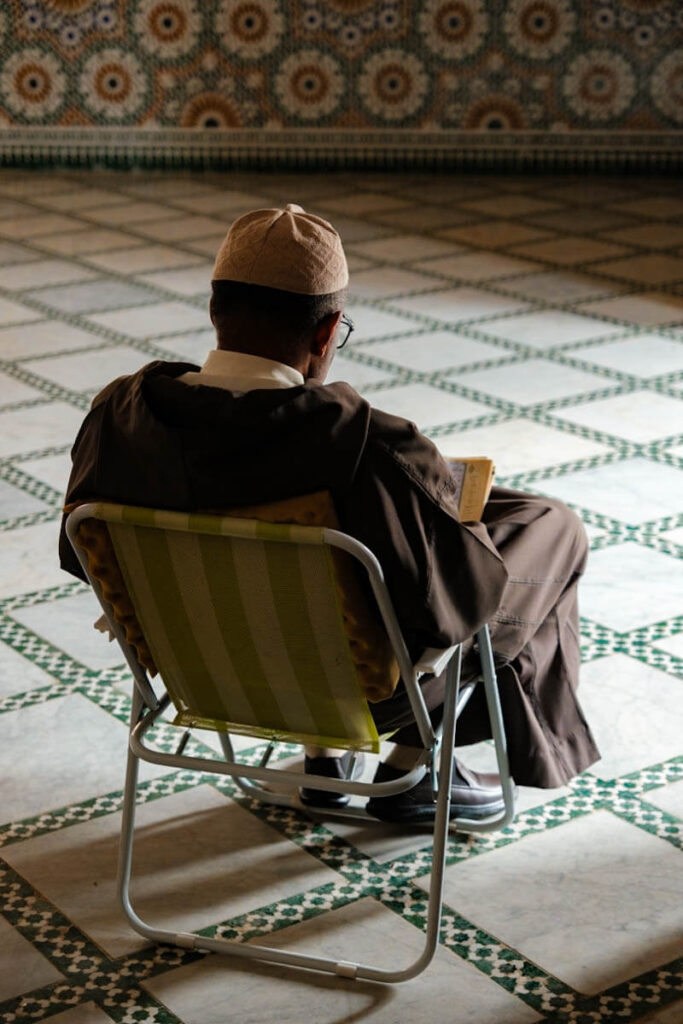
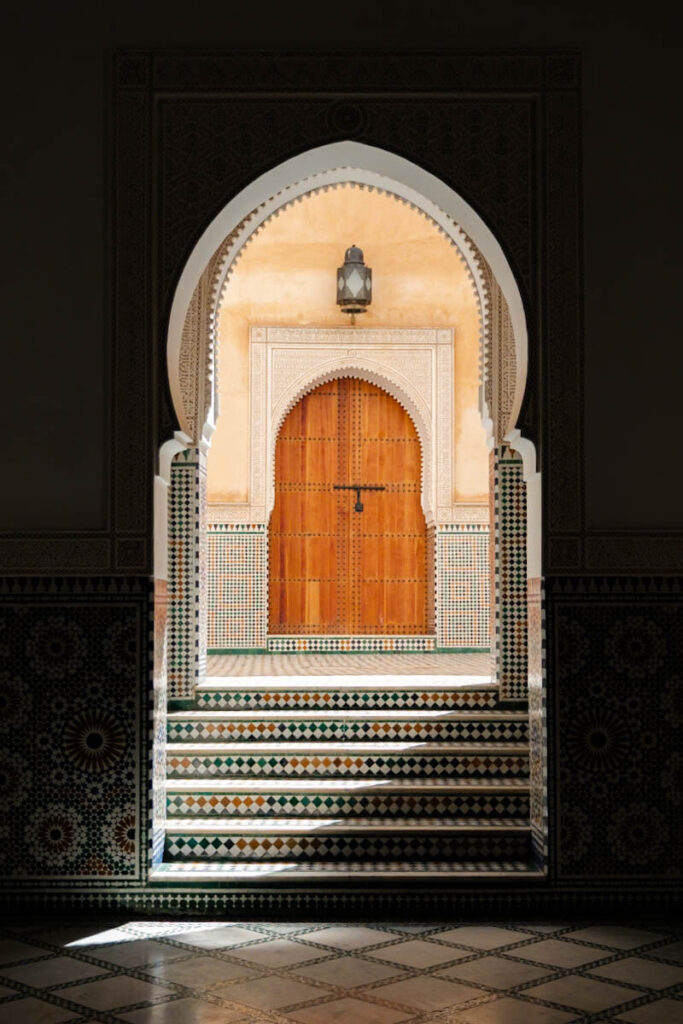
Layout of the Mausoleum
The mausoleum consists of a reception hall (indoor), three open courtyards, an indoor patio and a burial chamber. It displays a clear blend of traditional Moroccan and Islamic architectural styles, with intricate decorations in mosaic, zelliges and muqarnas. The ceilings inside are richly adorned and wooden elements throughout the interior are beautifully detailed.
Reception Hall of the Mausoleum
As you enter the mausoleum, you step into a covered square room where a central octagonal fountain, clad in mosaic, immediately catches the eye. The walls are lavishly decorated with mosaic patterns and zelliges. Light pours in beautifully through the single opening that leads to the first courtyard — a striking contrast to the relatively dark entrance area. To the left, somewhat tucked away, you’ll find a door to the restrooms. This area also offers a beautifully designed space for washing your hands.
First courtyard of the Mausoleum
In the first courtyard, you’ll spot several columns that may well have originated from Volubilis. It’s known that Moulay Ismail ordered nearly all structures in Volubilis to be dismantled so he could reuse the stones and columns in his palaces, mosques and his own mausoleum in Meknès.
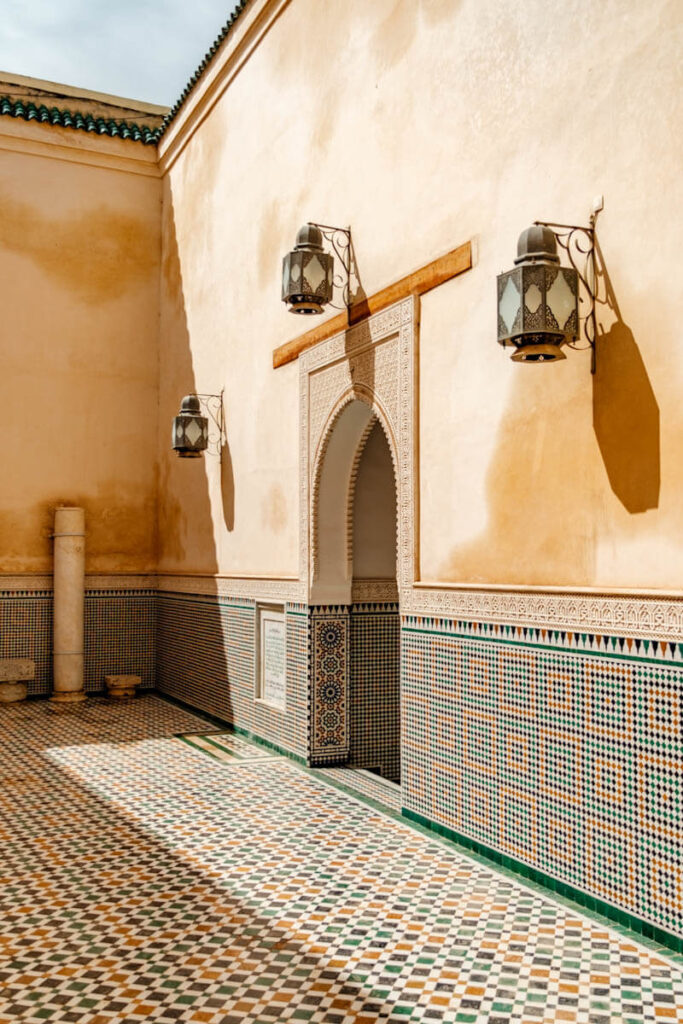
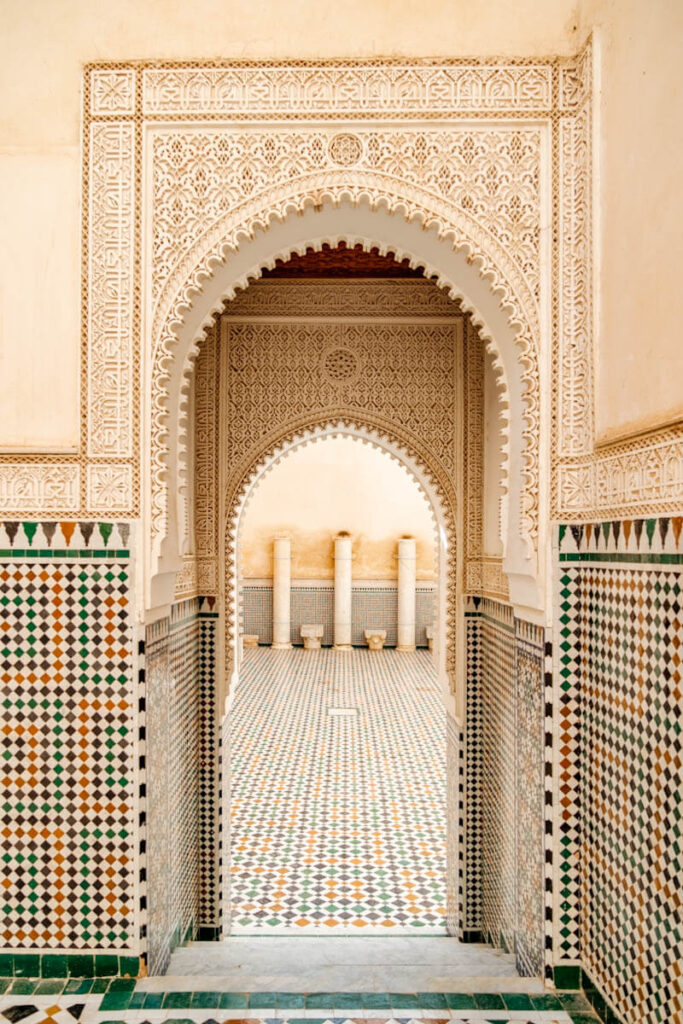
Second courtyard of the Mausoleum
The second courtyard is modest, perhaps even more understated than the first. There are no columns or fountains here, but the lower sections of the walls are beautifully adorned with intricate mosaic work. These mosaic panels are topped with muqarnas, which continue gracefully above the arches of each passageway. The craftsmanship is truly exquisite.
Third courtyard of the Mausoleum
The third courtyard is the largest of the three. At its center stands a fountain, used by the devout for ritual purification. On either side of the courtyard are arcades, each with three horseshoe-shaped arches. At the center of each arcade is a mihrab—a prayer niche indicating the direction of Mecca, seamlessly integrated into the design.
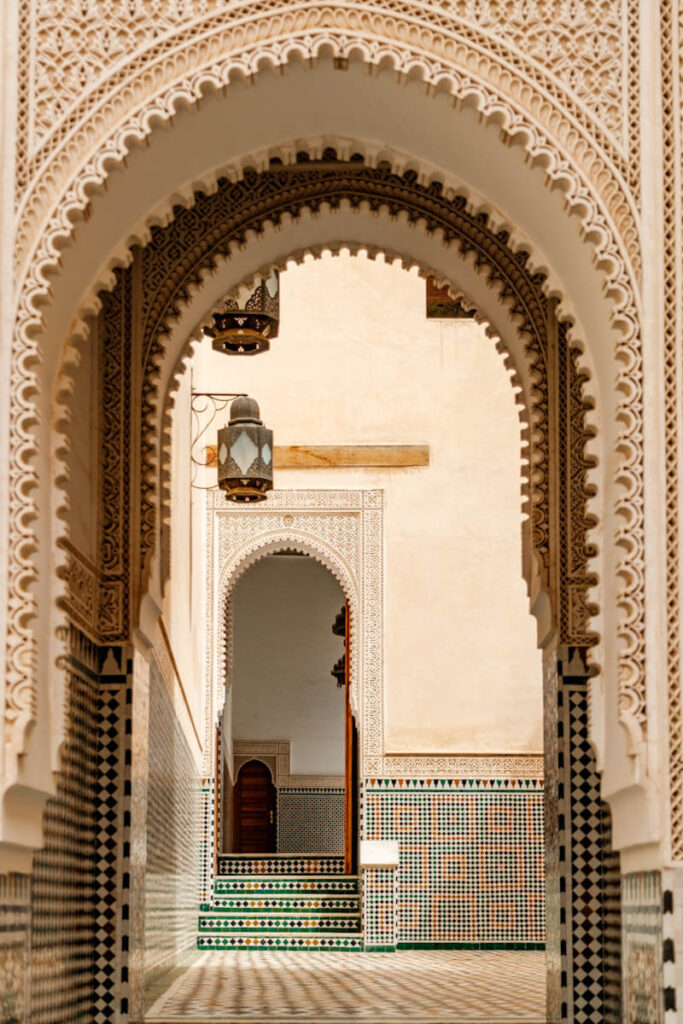

Interior space with patio and tomb chamber
Before entering the interior space, visitors are required to remove their shoes. You step into a transitional area between the patio and the tomb chamber. Immediately, your eyes are drawn toward the light streaming into the ornately decorated patio, making the area with the tomb appear even darker by contrast.
At the center of the patio stands a beautiful marble fountain, set on a vibrant floor adorned with colorful mosaics. The intricate details are striking, especially when you look up toward the light. The generous use of muqarnas gives the space an architectural richness that evokes the Moorish palaces of the Alhambra.
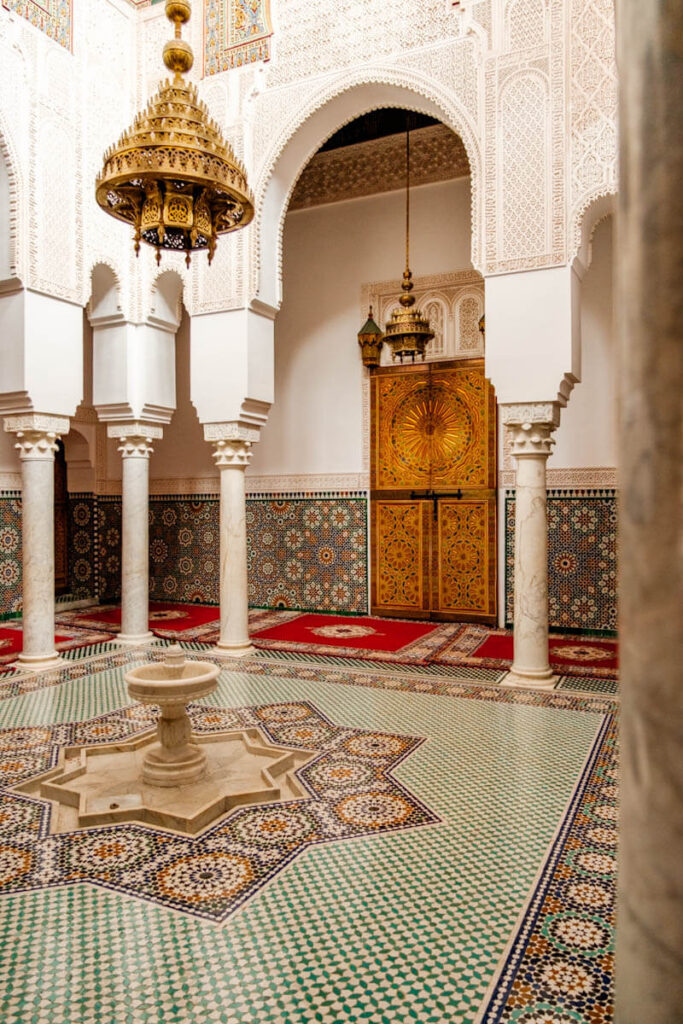
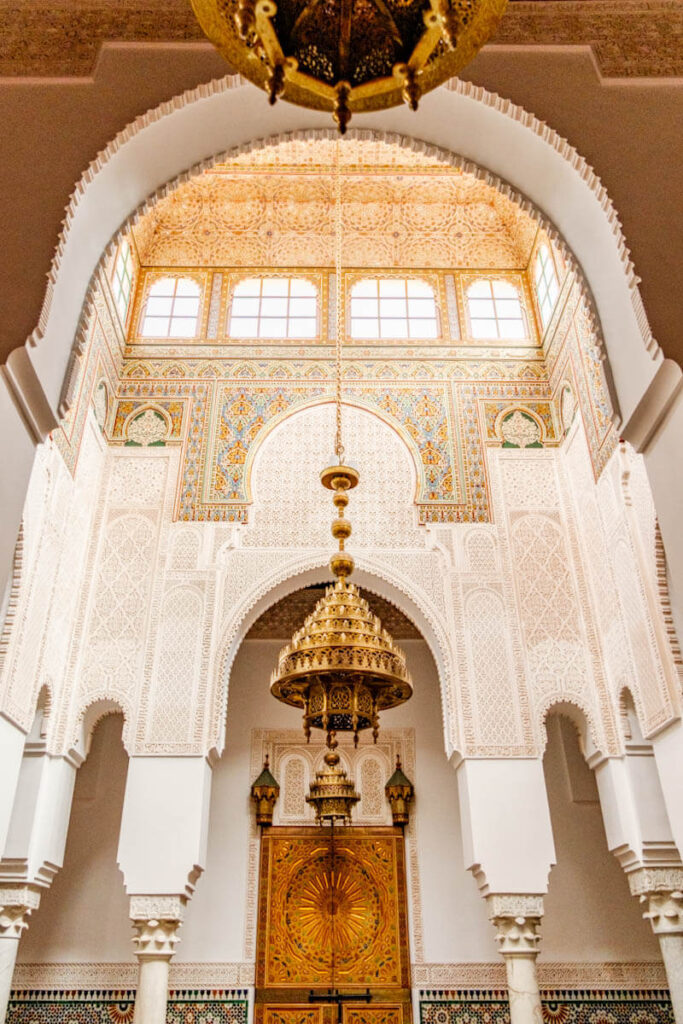
Visiting the Mausoleum of Moulay Ismail
The Mausoleum of Moulay Ismail is open daily from 9:00 AM to 6:00 PM, except on Fridays. Admission is free and visitors are welcome to stay inside as long as they wish. Photography is allowed throughout the mausoleum; however, flash photography is prohibited in the transitional area, the patio and the tomb chamber.
